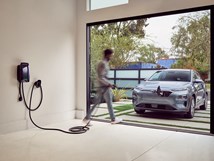Mercedes Debuts New Family of Aluminum Diesels
Daimler AG’s Mercedes-Benz unit says its new 2.0-liter four-cylinder engine is lighter, more efficient and more powerful than the 2.1-liter diesel it replaces.
#aluminum
Daimler AG’s Mercedes-Benz unit says its new 2.0-liter 4-cylinder engine is lighter, more efficient and more powerful than the 2.1-liter diesel it replaces.
The all-aluminum powerplant, which debuts this spring in the 2016 E-Class, is the first model in a new family of modular diesel engines expected to eventually be offered in all Mercedes cars and crossover vehicles. The carmaker says the engines are designed to meet all upcoming global emissions regulations.
Fuel consumption with the new 2.0-liter diesel is reduced by 13% from its predecessor, while output jumps 14% to 192 hp. A new exhaust gas recirculation system combines cooled high-pressure and low-pressure EGR, which Mercedes says further reduces untreated emissions across the entire engine map. Noise and vibration levels also have been lowered, Mercedes says.
The aluminum construction—a first for a four-cylinder Mercedes diesel—helps save 76 lbs, reducing the engine’s weight to 371 lbs. Other features include steel pistons with stepped combustion bowls, fourth-generation common-rail fuel injection and what’s described as a “nano-slide” cylinder coating.
The new diesels will be offered in various states of tune, in longitudinal and transverse layouts as well as in front-, rear- and all-wheel-drive vehicles. In the E-Class, the 2.0-liter mill will be mated with a 9-speed automatic transmission.
Mercedes launched its current 4-cylinder diesel in 2008. It is the highest-volume diesel engine in the company’s history.
RELATED CONTENT
-
When Automated Production Turning is the Low-Cost Option
For the right parts, or families of parts, an automated CNC turning cell is simply the least expensive way to produce high-quality parts. Here’s why.
-
Choosing the Right Fasteners for Automotive
PennEngineering makes hundreds of different fasteners for the automotive industry with standard and custom products as well as automated assembly solutions. Discover how they’re used and how to select the right one. (Sponsored Content)
-
TRW Multi-Axis Acceleration Sensors Developed
Admittedly, this appears to be nothing more than a plastic molded part with an inserted bolt-shaped metal component.








